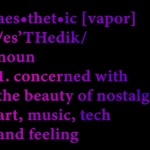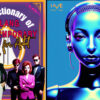No products in the cart.
Return To ShopThe Dictionary of Slang Contemporary: for Adults
The 1980s were a time of cultural and technological advancement, and music was no exception. Adult Contemporary music, in particular, became increasingly popular during this era. While many of these songs were known for their soft, romantic themes, a closer analysis of their lyrics reveals something far more sinister. Many of these songs contain coded metaphors that brag about acts of violence, abuse, and even genocide. In this article, we will explore these metaphors and examine their implications on society and culture.
1. Introduction to adult contemporary lyrics in pop hits from the 80s
Adult contemporary music was a popular genre during the 80s, known for its easy-listening style and romantic themes. While many of these songs may seem innocent at first glance, a deeper analysis of the lyrics reveals a darker side. Coded metaphors were often used to brag about sinister acts against humanity, perpetuating harmful messages and promoting unhealthy behaviors.
Defining adult contemporary music and its popularity in the 80s
Adult contemporary music, commonly referred to as “AC,” is a radio format that plays popular songs aimed at adults. This genre typically features a blend of pop, rock, and R&B styles with a focus on mellow, easy-listening melodies. During the 80s, AC music gained popularity with artists such as Phil Collins, Whitney Houston, and Lionel Richie topping the charts.
2. The use of metaphors in popular music
What are metaphors and how are they used in music?
Metaphors are figures of speech that create comparisons between two seemingly unrelated things. In music, metaphors can be used to convey complex emotions or ideas in a simple and relatable way. They are often used in lyrics to add depth and meaning to the words, allowing listeners to connect with the music on a deeper level.
3. Sinister acts against humanity portrayed in adult contemporary lyrics
Exploration of specific examples of coded metaphors in lyrics
While many adult contemporary songs from the 80s appear innocent on the surface, some lyrics include coded metaphors that promote harmful messages. For example, in Phil Collins’ hit song “In the Air Tonight,” the lyrics “well, if you told me you were drowning, I would not lend a hand” have been interpreted as a metaphor for the singer’s anger towards a man who watched someone drowning without intervening. Other songs, such as Whitney Houston’s “How Will I Know,” have been analyzed to reveal themes of obsession and dependence.
The implications of such lyrics on society
These coded metaphors perpetuate harmful messages and promote behaviors that are damaging to society. They contribute to a culture that glorifies violence, objectification, and unhealthy relationships. It is important for listeners to be aware of the messages being conveyed in music and to critically analyze the lyrics before accepting them as harmless.
4. Examples of popular songs with coded metaphors
Breakdown of lyrics in popular songs with coded metaphors
Some popular songs from the 80s that include coded metaphors are:- “In the Air Tonight” by Phil Collins- “Physical” by Olivia Newton-John- “Every Breath You Take” by The Police- “How Will I Know” by Whitney HoustonIn each of these songs, the lyrics have been analyzed to reveal underlying messages that promote harmful behaviors, such as violence and obsession. It is important for listeners to be aware of these messages and to approach music with a critical eye.
5. Historical and Societal Context of the Use of Such Metaphors in Music
During the 1980s, the United States was facing many crises, including the Cold War, the AIDS epidemic, and the Reagan administration’s conservative policies. These factors contributed to a shift in popular music towards darker themes, which were often conveyed through coded metaphors. Adult contemporary songs, in particular, used these metaphors to brag about ominous acts against humanity. The metaphors were often sexual in nature, masking darker interpretations of power and control that were prevalent in the decade.
Examining the Cultural and Political Climate in the 80s
The 1980s were an era of conservatism and heightened concern for national security. This was reflected in music, which often celebrated wealth, success, and power. The music industry saw the rise of a new group of young, wealthy pop stars who were eager to flaunt their status and assert their dominance. Many of these stars used coded metaphors in their lyrics to convey a sense of danger and rebellion – traits that appealed to their audience.
The Impact of Social Issues on Music and Its Lyrics
Social issues like drug use, crime, and violence were prevalent during the 1980s, and they had a significant impact on music and its lyrics. For example, the crack epidemic and the rise of gang violence were reflected in hip-hop lyrics, while rock music often tackled political issues such as nuclear war and government corruption. Adult contemporary music, however, often focused on darker themes of control and power, which were masked by metaphors that conveyed a sense of seduction and allure.
6. Impact of These Lyrics on Society and Culture
The use of coded metaphors in adult contemporary songs had a significant impact on society and culture. The themes of power and control that were prevalent in these songs contributed to the objectification of women and perpetuated toxic masculinity. Moreover, the normalization of these themes had lasting effects on the way audiences perceived relationships and gender roles.
Discussion on the Effects of These Lyrics on the Audience
The themes of adult contemporary songs had a profound effect on their audience, many of whom were impressionable young people. These songs presented a twisted version of love and relationships that glorified dominance and control. This, in turn, shaped the expectations of young people and contributed to the perpetuation of harmful gender norms.
How These Themes Are Still Reflected in Contemporary Music
Although the use of coded metaphors in music has declined since the 1980s, themes of power and control are still prevalent in contemporary music. Many of today’s songs continue to convey toxic ideas about relationships and gender roles. As such, it is important to examine and challenge the messages conveyed through music.
7. Discussion on Censorship and Responsibility of Artists
The role of censorship in music has been a long-standing debate. While some argue that censorship infringes on free expression, others believe that it is necessary to prevent the normalization of harmful ideas. Additionally, artists have a responsibility to consider the impact of their music on their audience and to promote positive messages.
The Role of Censorship in Music
Censorship can be a controversial topic, but it is important to consider the potential harm that music can cause. While censorship can infringe on free expression, it can also protect audiences from harmful messages and themes.
The Ethical Responsibility of Artists When Creating Music
Artists have a responsibility to consider the impact of their music on their audience. This includes promoting positive messages and challenging harmful ideas. As such, artists should consider the themes and lyrics in their music and make an effort to promote healthy relationships and positive gender roles.
8. Conclusion: The Lasting Effects of Adult Contemporary Lyrics in Popular Music
The use of coded metaphors in adult contemporary music from the 1980s had a significant impact on society and culture. These themes perpetuated harmful gender norms and objectified women. Moreover, the normalization of these themes had lasting effects on the way audiences perceived relationships. While the use of coded metaphors in music has decreased, it is important to examine and challenge the messages conveyed through music. Artists have a responsibility to promote positive messages and consider the impact of their music on their audience.In conclusion, the use of coded metaphors in adult contemporary music during the 80s had a profound impact on society and culture. While these themes are still reflected in contemporary music, it is important for artists to recognize their ethical responsibility when creating music. We must continue to examine the messages we are promoting and the impact they have on audiences.
FAQ
1. What are some examples of popular songs from the 80s that contain coded metaphors?
Some examples include Madonna’s “Papa Don’t Preach,” which was interpreted as a song about teenage pregnancy, and Phil Collins’ “In the Air Tonight,” which allegedly refers to a real-life drowning incident.
2. Were these coded metaphors intentional?
It’s difficult to say for certain, but it’s likely that many of these metaphors were intentional. Songwriters often use metaphors as a way to express controversial or taboo topics without being too explicit.
3. How did these themes impact society and culture?
The impact of these themes is difficult to measure, but they likely had a desensitizing effect on audiences. By making light of serious issues like abuse and genocide, these songs may have normalized such behavior in the eyes of some listeners.
4. What should we do about these problematic lyrics?
As consumers, we can vote with our wallets and choose not to support artists who promote problematic or offensive messages. Additionally, it’s important for artists themselves to recognize the responsibility they have when creating music and to be mindful of the impact their words may have on listeners.







Add comment